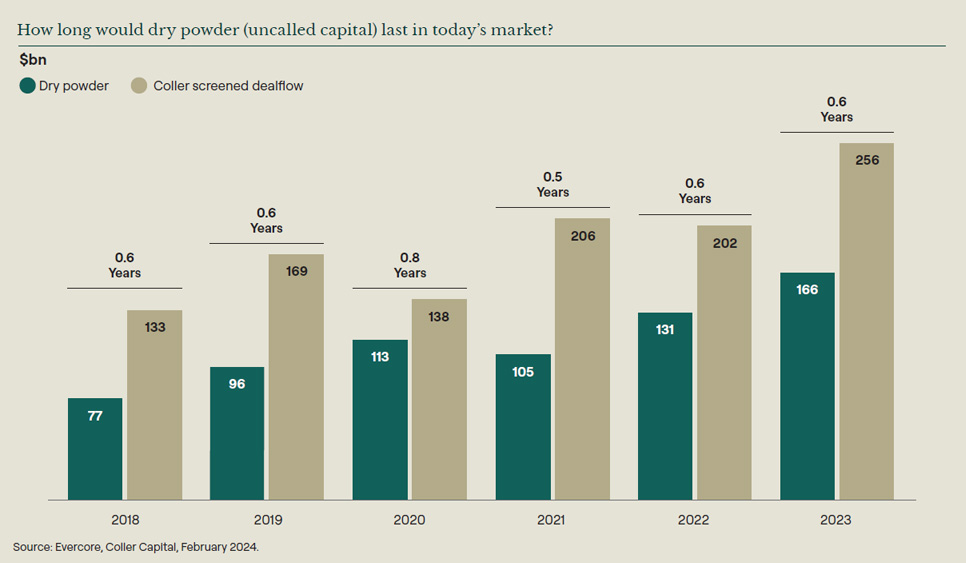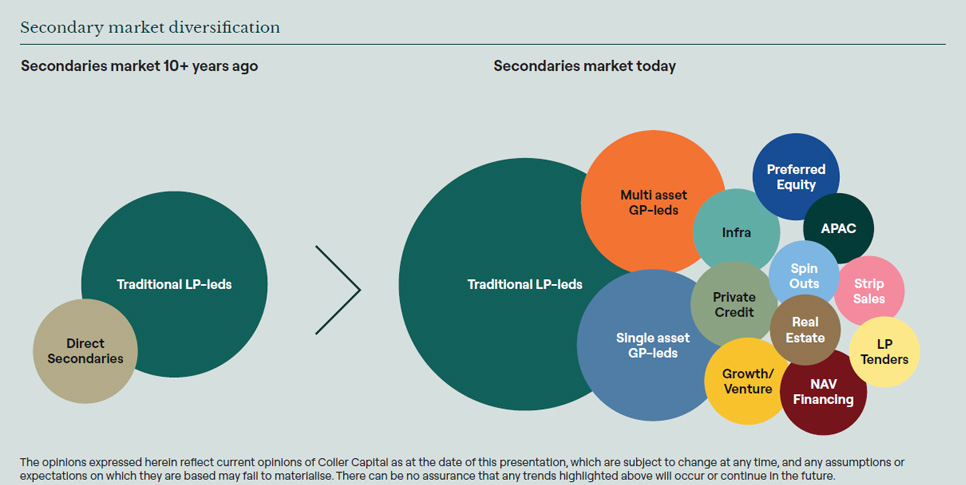Coller Capital: The dynamics in the secondaries market

Our first two chapters covered the fundamentals of what private capital secondaries are and the benefits of investing with it We’ll now take a look at the supply and demand dynamics that fuel the market.
Secondaries – the supply/demand dynamic
Historically in the secondaries market there has been limited buy-side capital compared to deal flow. Financial markets with this kind of imbalance often represent attractive opportunities for experienced buyers.
The chart below compares secondaries dry powder to Coller’s observed deal volumes.
At the beginning of 2024, there was $166 billion in dry powder for secondaries, compared to $256bn of deal-flow screened by Coller over 2023.
To put this in context, there is enough dry powder to acquire 0.6 years’ worth of screened dealflow at 2023’s volumes.

With limited capital to invest, secondaries buyers can be extremely selective in the transactions they execute. Buyers can focus on acquiring high-quality portfolios at attractive prices, supporting the potential for higher returns from secondaries in the year ahead. Successful secondaries buyers need to develop underwriting expertise and deep relationships with LPs, GPs and intermediaries.
Not only is capital constrained, it also remains concentrated. Evercore estimates that over three-quarters of all dry powder is held by the largest 16 global secondaries managers. Whilst the secondary market has seen an increase in the number of new entrants, the barriers to entry are high.
Secondaries – an evolution
Over the past decade, not only has the secondaries market grown in scale, it has also grown in scope, and today, is highly diversified.
Until about a decade ago, there was little over $10 billion in secondary volume. The global economy was still recovering from the Global Financial Crisis and the majority of the secondaries market activity was composed of LP-led portfolios, with volume driven by distressed sellers.
LP-leds were then joined by a small proportion of direct secondaries transactions.
In today’s market, we see a wider variety of transaction types, providing liquidity solutions across the entire spectrum of alternative asset classes and investment stages. The expansion and evolution of the secondaries market is a function of its proposition; as the mechanism for private market participants to actively manage their portfolios.

Data correct as at March 2024.







